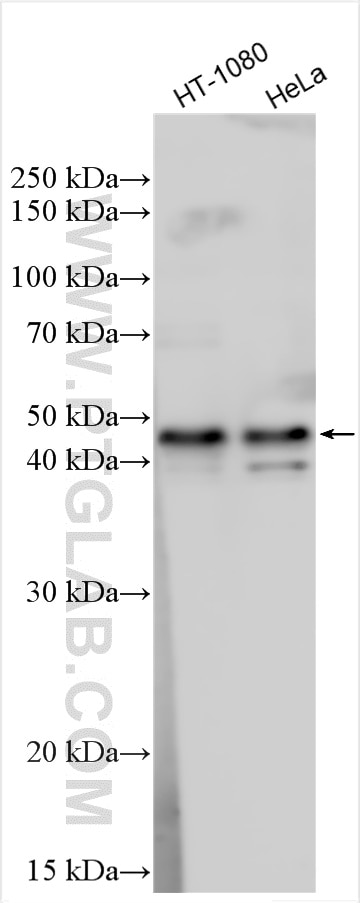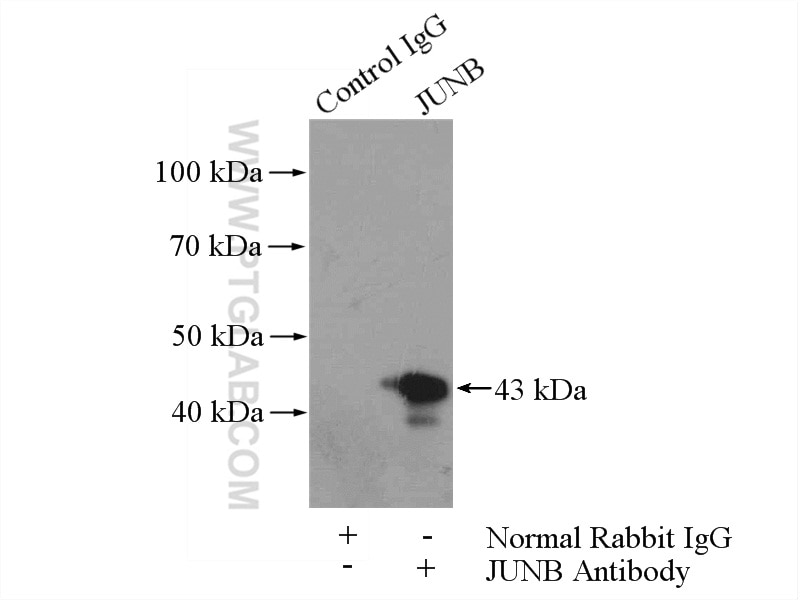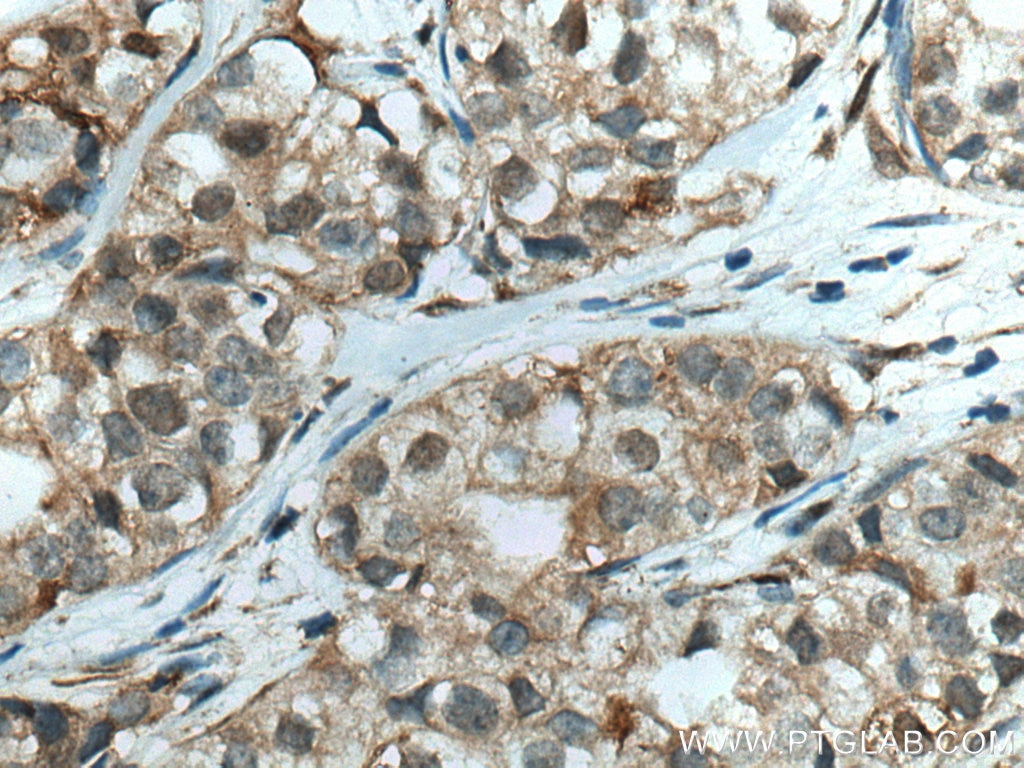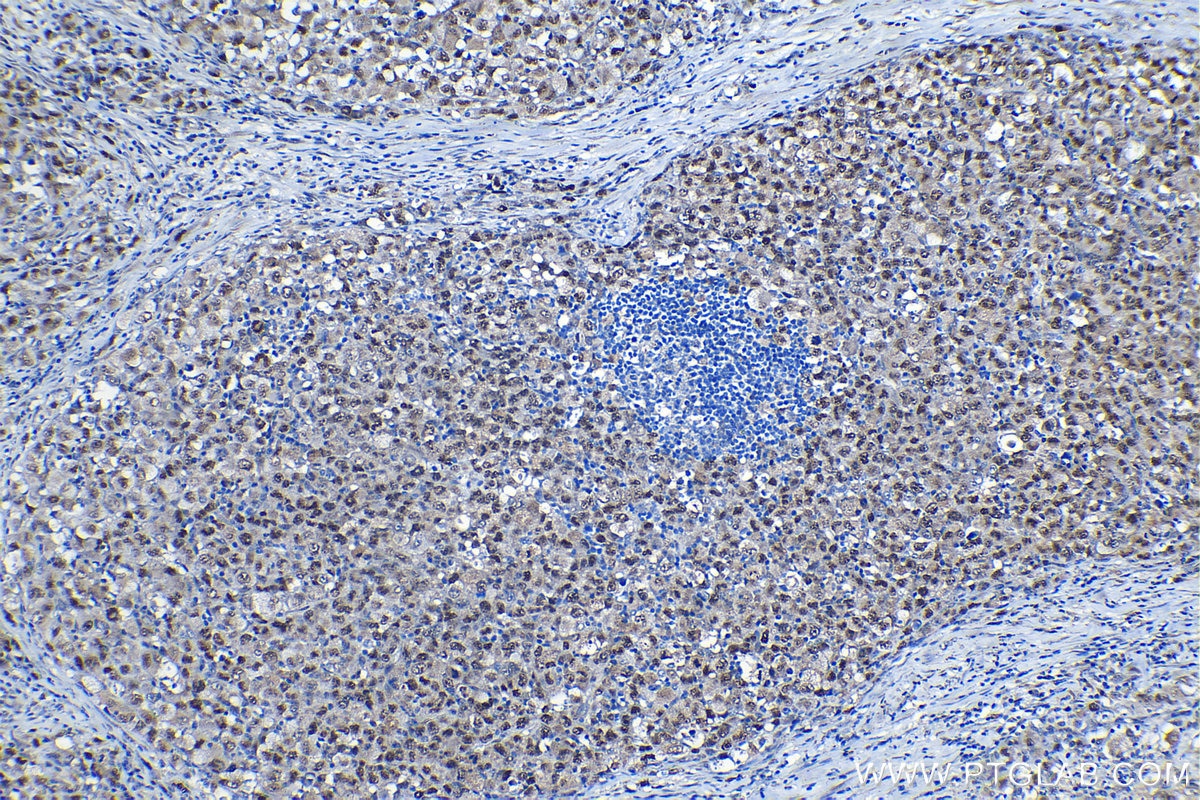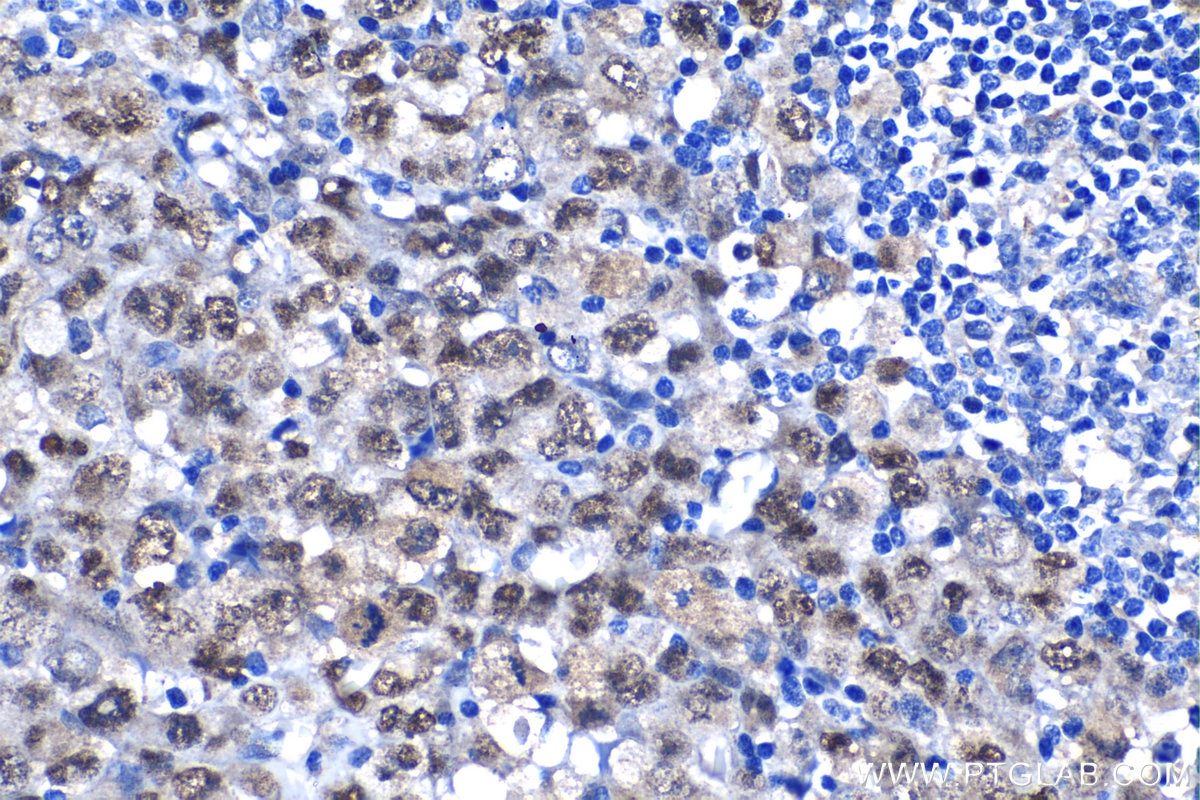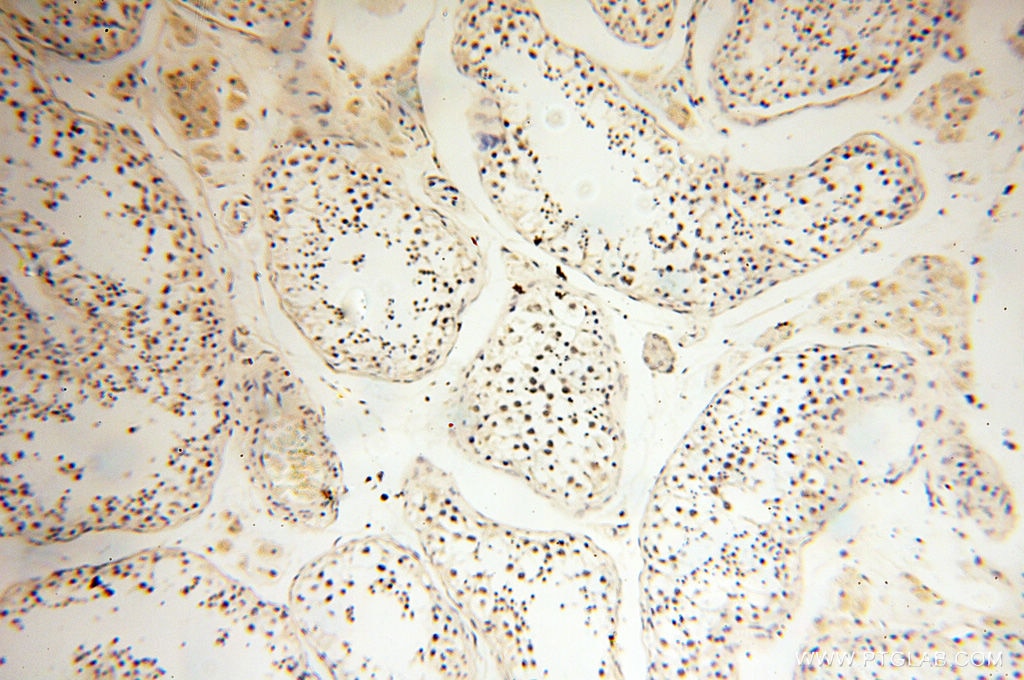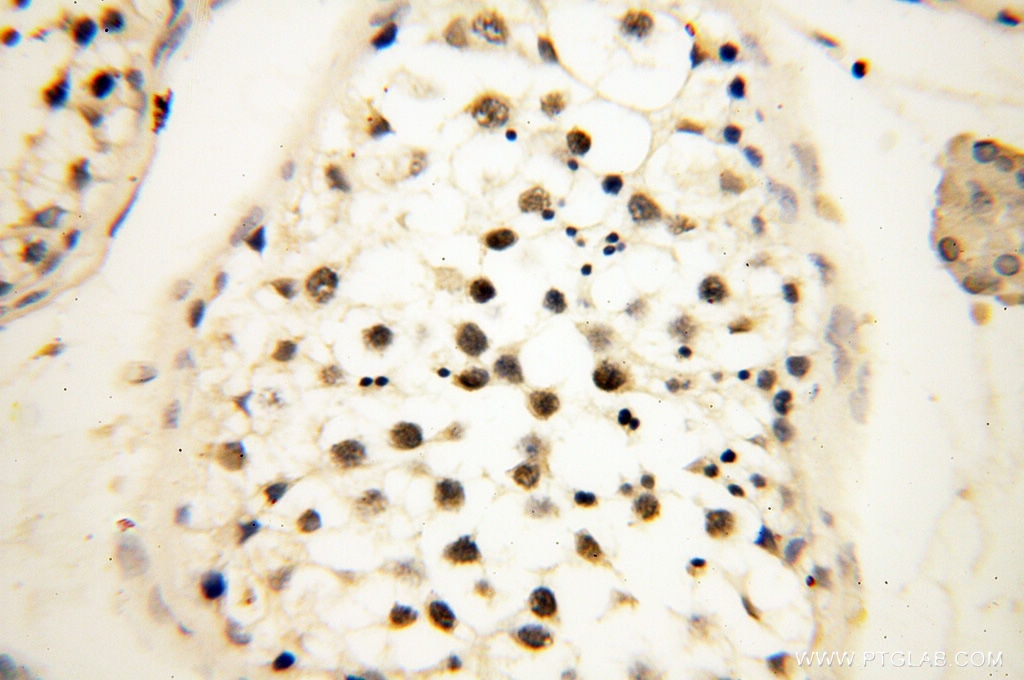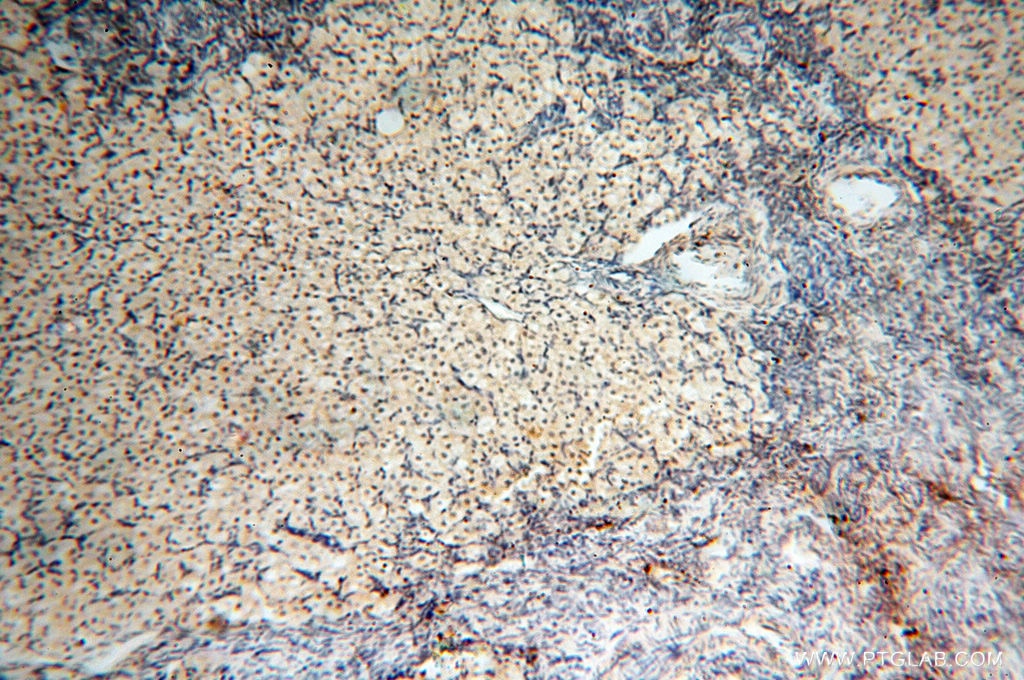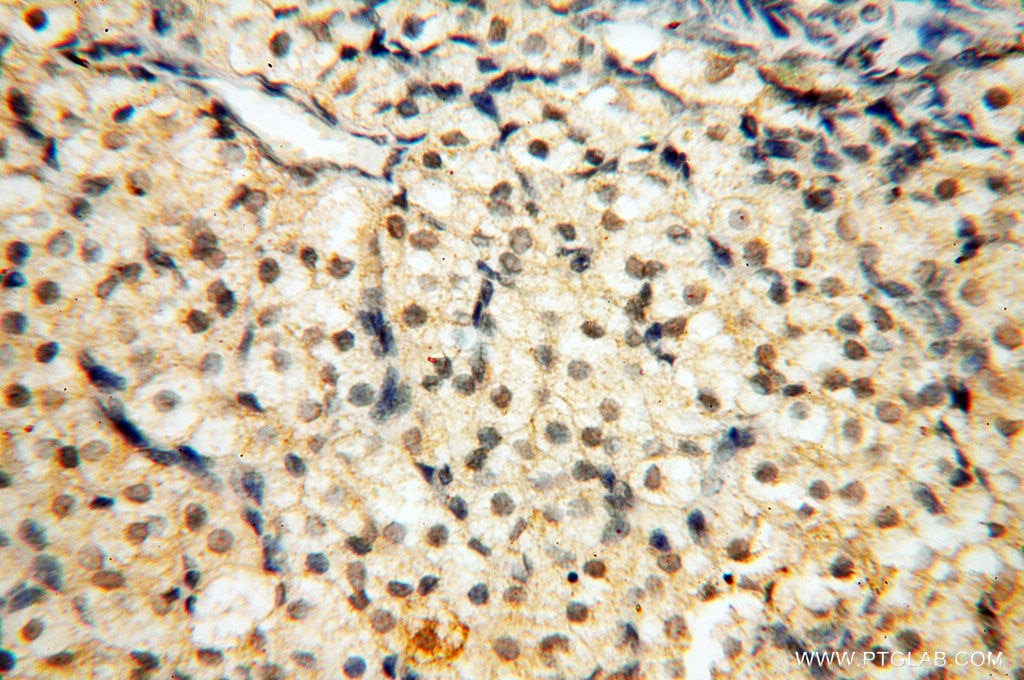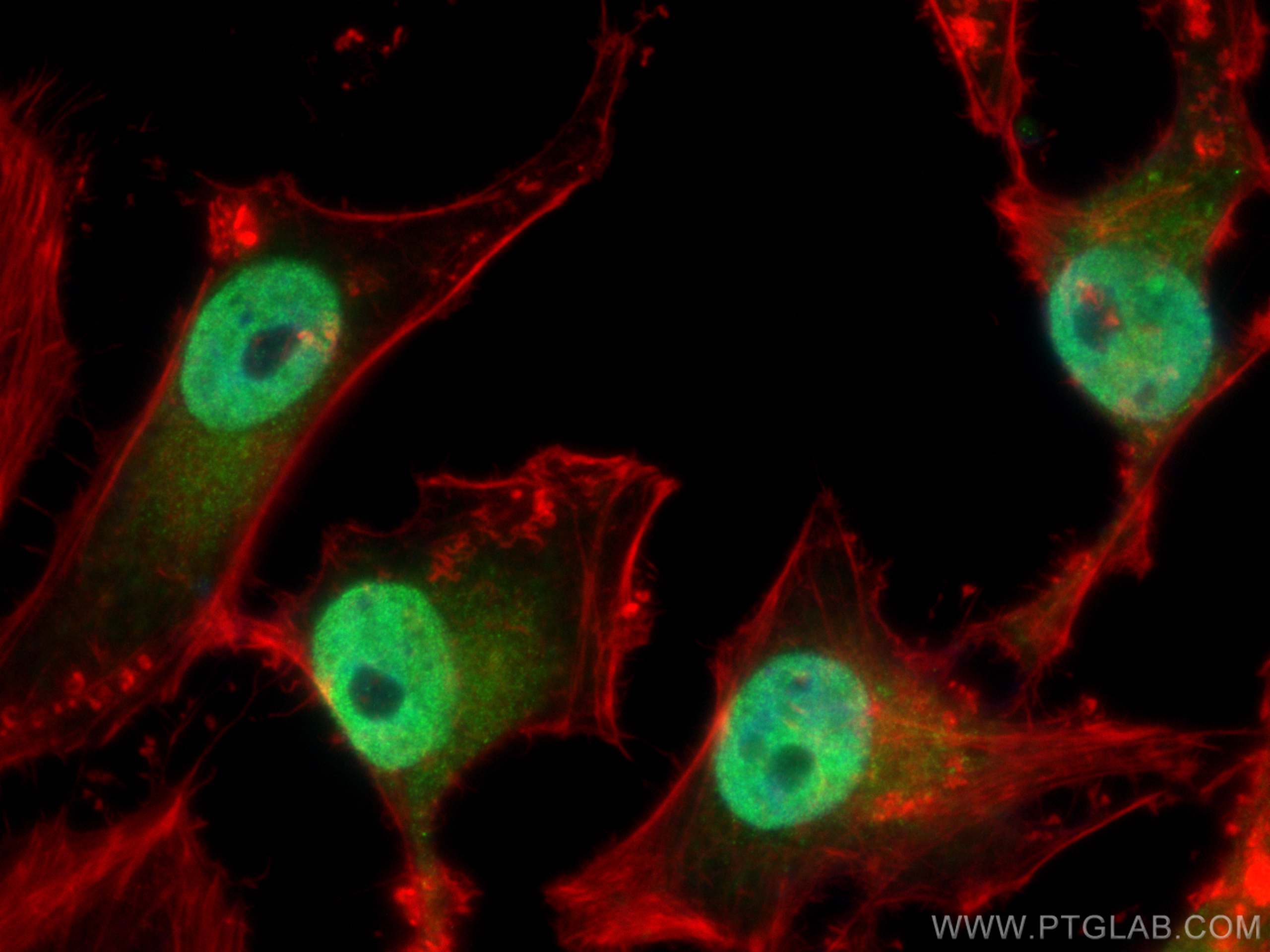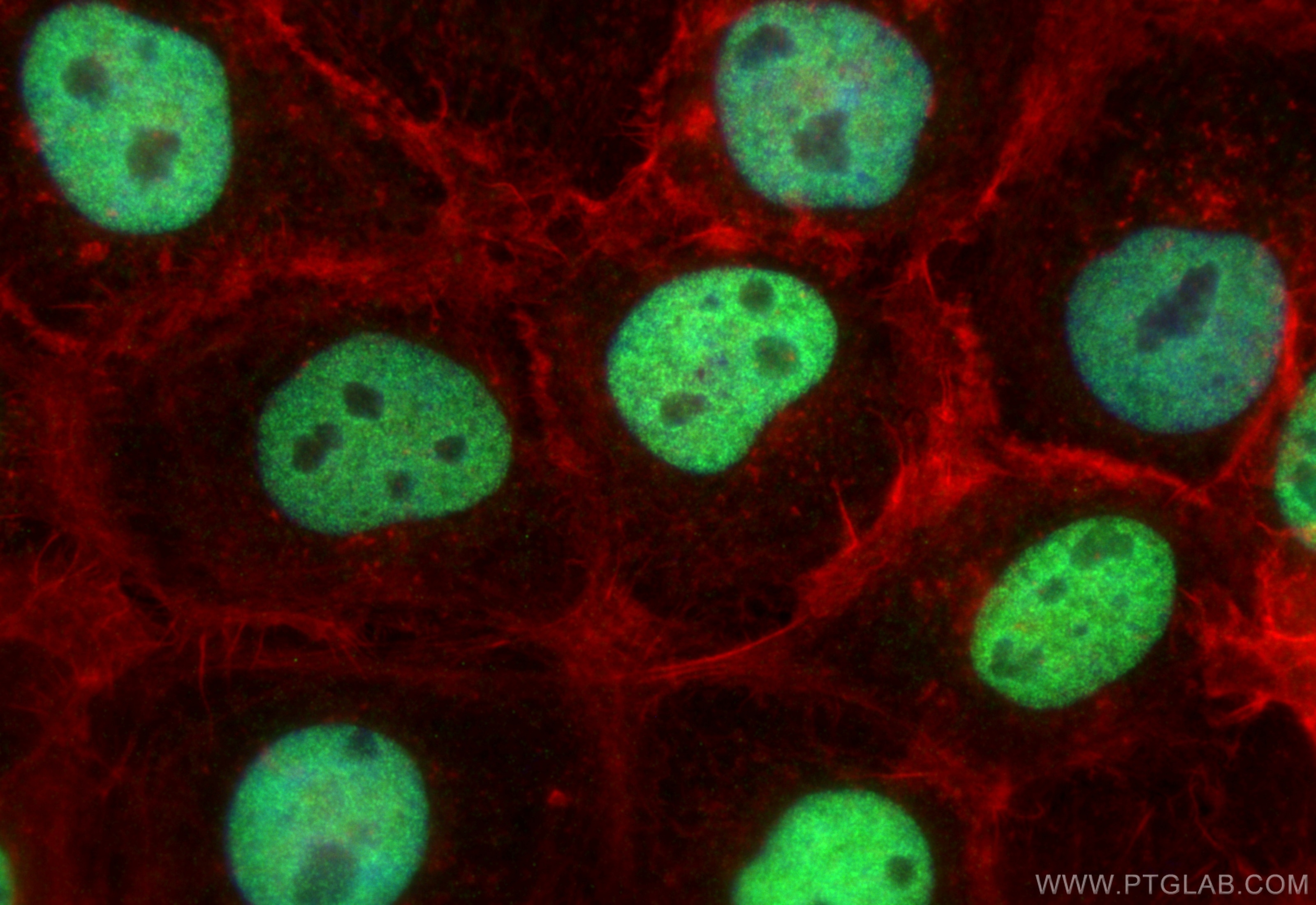Tested Applications
| Positive WB detected in | HT-1080 cells, HeLa cells, MCF-7 cells, MDA-MB-231 cells |
| Positive IP detected in | HeLa cells |
| Positive IHC detected in | human lymphoma tissue, human breast cancer tissue, human ovary tissue, human testis tissue Note: suggested antigen retrieval with TE buffer pH 9.0; (*) Alternatively, antigen retrieval may be performed with citrate buffer pH 6.0 |
| Positive IF/ICC detected in | A431 cells, HeLa cells |
Recommended dilution
| Application | Dilution |
|---|---|
| Western Blot (WB) | WB : 1:1000-1:8000 |
| Immunoprecipitation (IP) | IP : 0.5-4.0 ug for 1.0-3.0 mg of total protein lysate |
| Immunohistochemistry (IHC) | IHC : 1:500-1:2000 |
| Immunofluorescence (IF)/ICC | IF/ICC : 1:400-1:1600 |
| It is recommended that this reagent should be titrated in each testing system to obtain optimal results. | |
| Sample-dependent, Check data in validation data gallery. | |
Published Applications
| KD/KO | See 1 publications below |
| WB | See 10 publications below |
| IHC | See 1 publications below |
| IF | See 2 publications below |
| CoIP | See 1 publications below |
Product Information
10486-1-AP targets JUNB in WB, IHC, IF/ICC, IP, CoIP, ELISA applications and shows reactivity with human, mouse, rat samples.
| Tested Reactivity | human, mouse, rat |
| Cited Reactivity | human, mouse, rat |
| Host / Isotype | Rabbit / IgG |
| Class | Polyclonal |
| Type | Antibody |
| Immunogen |
CatNo: Ag0752 Product name: Recombinant human JUNB protein Source: e coli.-derived, PGEX-4T Tag: GST Domain: 1-200 aa of BC004250 Sequence: MCTKMEQPFYHDDSYTATGYGRAPGGLSLHDYKLLKPSLAVNLADPYRSLKAPGARGPGPEGGGGGSYFSGQGSDTGASLKLASSELERLIVPNSNGVITTTPTPPGQYFYPRGGGSGGGAGGAGGGVTEEQEGFADGFVKALDDLHKMNHVTPPNVSLGATGGPPAGPGGVYAGPEPPPVYTNLSSYSPASASSGGAGA Predict reactive species |
| Full Name | jun B proto-oncogene |
| Calculated Molecular Weight | 36 kDa |
| Observed Molecular Weight | 38 kDa, 42 kDa |
| GenBank Accession Number | BC004250 |
| Gene Symbol | JUNB |
| Gene ID (NCBI) | 3726 |
| RRID | AB_2129996 |
| Conjugate | Unconjugated |
| Form | Liquid |
| Purification Method | Antigen affinity purification |
| UNIPROT ID | P17275 |
| Storage Buffer | PBS with 0.02% sodium azide and 50% glycerol, pH 7.3. |
| Storage Conditions | Store at -20°C. Stable for one year after shipment. Aliquoting is unnecessary for -20oC storage. 20ul sizes contain 0.1% BSA. |
Background Information
JunB is one of the components of the Activator Protein-1 (AP-1) transcription complex that have been implicated in the control ofthe G0/G1 transtion in fibroblasts. AP-1 is a collection of dimers formed by members of the Jun-, Fos-, ATF- and Maf multigene families that bind to specific DNA regulatory elements called AP-1/12-O-tetradecanoylphorbol-13-acetate-responsive elements (TREs) and cAMP-responsive elements (CREs). JunB binds to the DNA sequence 5'-TGA[CG]TCA-3', and involves in the regulation of gene activity following the primary growth factor response. It also acts either as a tumor suppressor or as an oncogene depending on the cell and physiopathological context
Protocols
| Product Specific Protocols | |
|---|---|
| IF protocol for JUNB antibody 10486-1-AP | Download protocol |
| IHC protocol for JUNB antibody 10486-1-AP | Download protocol |
| IP protocol for JUNB antibody 10486-1-AP | Download protocol |
| WB protocol for JUNB antibody 10486-1-AP | Download protocol |
| Standard Protocols | |
|---|---|
| Click here to view our Standard Protocols |
Publications
| Species | Application | Title |
|---|---|---|
Signal Transduct Target Ther MDIG-mediated H3K9me3 demethylation upregulates Myc by activating OTX2 and facilitates liver regeneration | ||
Pharmacol Res Cyclo-(Phe-Tyr) as a novel cyclic dipeptide compound alleviates ischemic/reperfusion brain injury via JUNB/JNK/NF-κB and SOX5/PI3K/AKT pathways. | ||
J Proteome Res Systematic Survey of the Regulatory Networks of the Long Noncoding RNA BANCR in Cervical Cancer Cells. | ||
Oncol Lett Cigarette smoke extract-induced proliferation of normal human urothelial cells via the MAPK/AP-1 pathway. |
Reviews
The reviews below have been submitted by verified Proteintech customers who received an incentive for providing their feedback.
FH Vignesh (Verified Customer) (11-05-2025) | Excellent antibody
|

